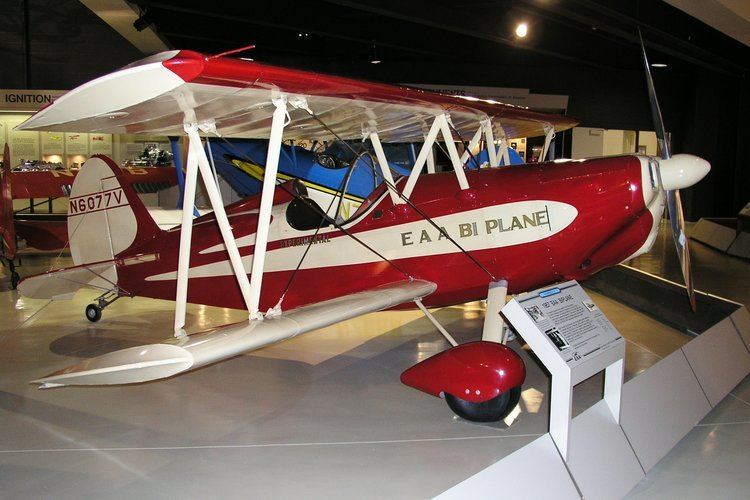Top speed 169 km/h Wingspan 6.1 m Weight 315 kg Engine type Continental O-190 | Range 322 km Length 5.18 m Unit cost 2,385–2,385 USD (1971) | |
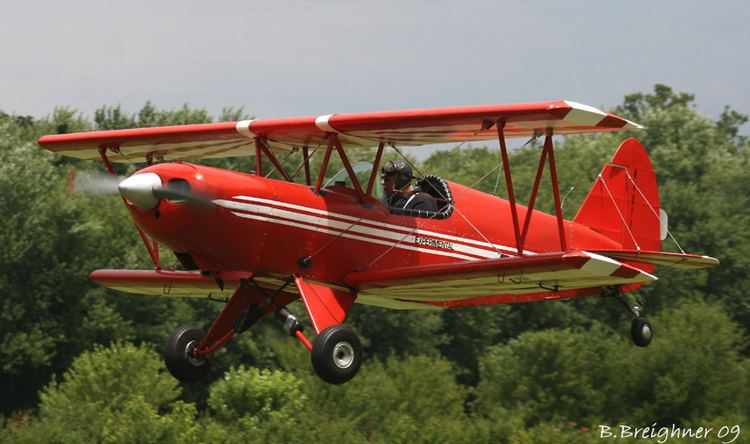 | ||
1960 eaa biplane a 1 p 2 prototype n6077v
The EAA Biplane is a recreational aircraft that was designed in the United States in the late 1950s and marketed as plans for homebuilding.
Contents
- 1960 eaa biplane a 1 p 2 prototype n6077v
- Bud nosen eaa biplane
- Design and development
- Specifications typical
- References
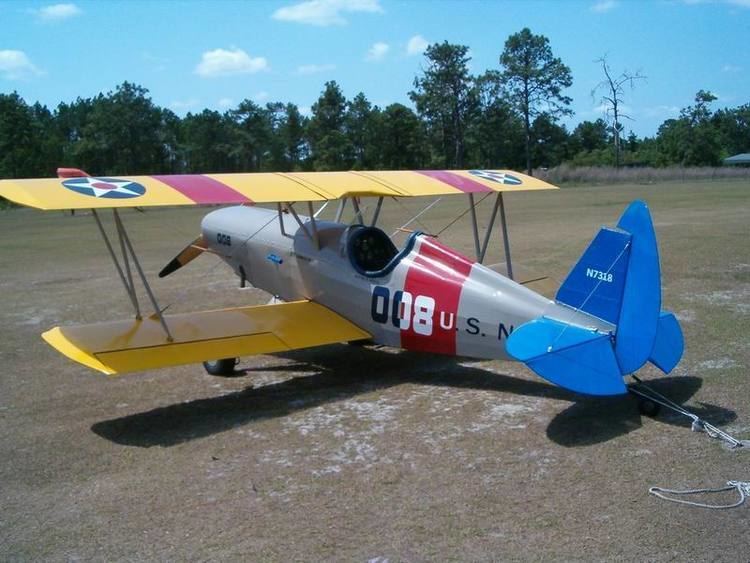
Bud nosen eaa biplane
Design and development
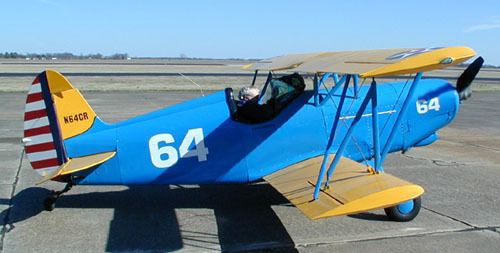
The design was produced for the EAA by a team of Allison engineers led by EAA member Jim D. Stewart. This team took the Gere Sport of the 1930s as their starting point and eventually developed a completely new design.
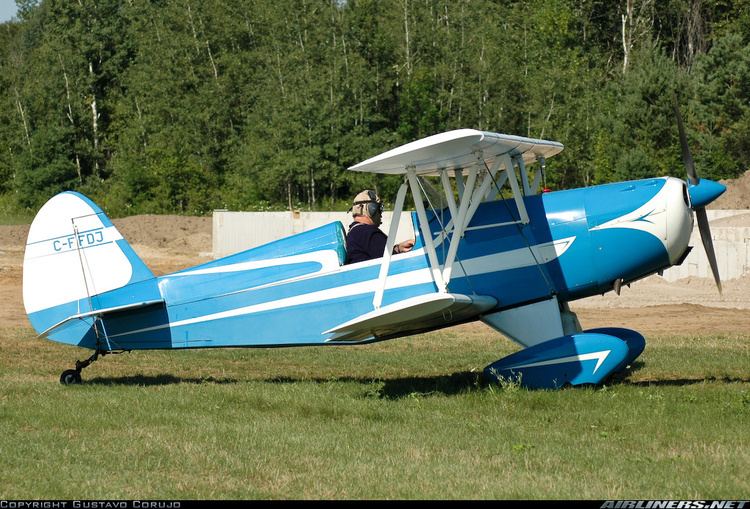
It is a single-seat biplane of conventional configuration, with staggered, single-bay equal-span wings braced with N-struts. The undercarriage is of fixed tailwheel type. The fuselage is fabric-covered welded steel tube, and the wings fabric-covered wood. Plans for the biplane remained available until 1972, by which time some 7,000 sets had been sold. The prototype is now preserved at the EAA AirVenture Museum in Oshkosh, Wisconsin.
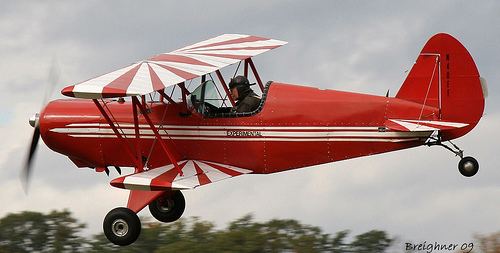
The prototype was constructed by students at St. Rita of Cascia High School, Chicago and first flew in 1960. Another example named the "Parkside Eagle" was constructed by students of Parkside High School in Michigan in 1971 and test flown for the first time by Paul Poberezny.
Articles as late as 2003 describe various aspects, modifications and completing construction of EAA Biplanes.
Specifications (typical)
General characteristics
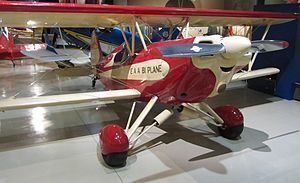
Performance
